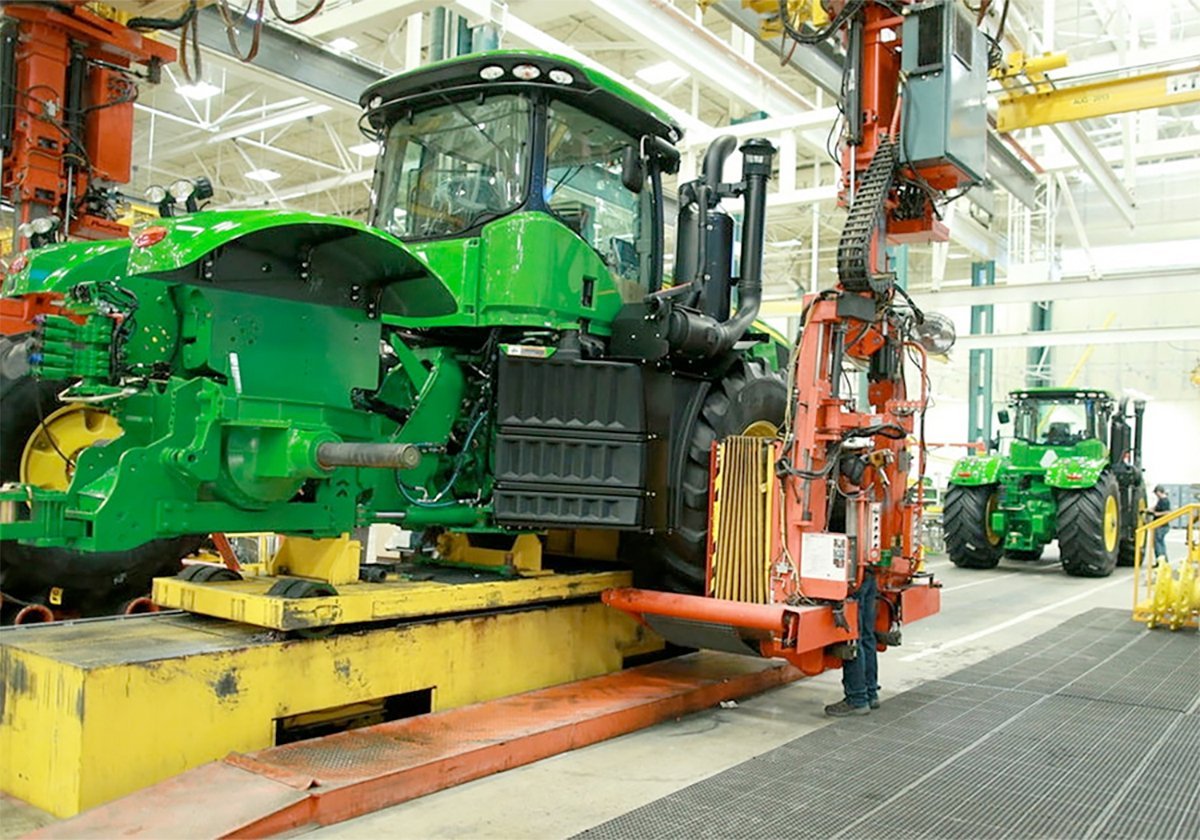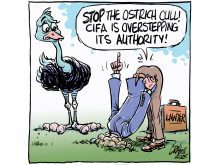Seed costs
This is a response to the advertisement in the April 6 paper about bin run seed, put in by the Saskatchewan Seed Growers Association.
They made it sound like buying certified seed is the cheaper alternative. I want to clarify a few numbers that made their figuring wrong.
They put the cost of the germ, disease and vigour tests as a per bushel figure on 100 bushels of grain. That works out to $1.15 per bu. No one cleans 100 bu. of seed. If you take it at 1,000 bu., it’s only 11 cents per bu.
Read Also

Trump’s trade policies take their toll on Canadian producers
U.S. trade policy as dictated by president Donald Trump is hurting Canadian farmers in a multitude of ways.
Only one test is needed, even up to 10,000 bu., so they are misrepresenting that cost. Also they failed to mention there would be screenings to sell, which brings the cost down. Also trucking charges of 20 cents per bu. would haul it 70 miles.
I think for the most part there are plants closer than that, so I dropped that price in half.
Here are my numbers using their dollar values on more grain: 1,000 bu. at $4 equals $4,000. Hauling, 1,000 at 10 cents equals $100. Cleaning at 40 cents equals $400. Hauling 800 bu. home at 10 cents equals $80. Germ test equals $20. Disease/vigour equals $70. Screenings of 220 bu. at $4 equals $800 off the seed cost. So that comes to $3,790 or $4.85 per bu. on 780 bushels. They had $7.26 per bu. on 78 bu.
If the seed growers are not selling enough certified seed, which I assume is the case because of their (ad), maybe they should look at bringing certified costs in line with what we sell our grain for. Or make the seed developers develop something that is better than what we already have.
They use $7.25 per bu. for certified cost but that would be cheap. It could easily push $9-$10 per bu.
If you take these numbers per acre, certified is $14.50 per acre compared to plant cleaned at $9.70. On the 400 acres that the 800 bu. would seed, that is $1,920 savings with your own perfectly good, pure, cleaned wheat seed.
We run a commercial cleaning plant and we do just as good of a job as a certified plant. So they are wrong in saying it’s not pure or cleaned right.
Instead of marketing biased info about costs, maybe they should look at getting their own costs down. Maybe we’d buy more certified seed, especially if it has some traits that are different than our grandfathers’ seed had.
– Nevin Morrow,
BlueSky Seed Cleaning,
Kelvington, Sask.
Research value
Many people have an unquestioning faith in research. They believe all researchers are trying to find solutions to certain problems and are looking for truth.
The system has integrity. No researcher or interest would ever falsify or hide information or go in a direction that is not for the common good.
I would like to draw attention to two areas of research: cancer and BSE. I would like to raise public awareness to question the establishment and demand a higher degree of accountability than we presently are getting.
Millions of dollars, public and private, are being spent on BSE research by the establishment. I suggest that this research will be of no meaningful help to the rancher or society as a whole.
The solutions sought are those that can be put in a bottle and sold. Meanwhile, Mark Purdey, whose personal research has given phenomenal insight into the cause and prevention of BSE, is ignored and has to continue his research on a shoestring budget. Mark’s income comes from personal donations and is not nearly adequate for the job ….
The cancer research situation is of even more serious consequence. People’s lives are at stake. People only have a limited amount of time to make the correct choice on method of treatment.
I have met a number of people who have recovered from cancer and give credit for their recovery to different treatments not recognized by the establishment. Is the establishment really trying to help and protect us as they say or is there a profit motive at work by the pharmaceutical companies which do not want a simple and inexpensive cure to become known…
Our health system is consuming too much money. Ordinary taxpayers must become informed and involved. Some costs can be trimmed by individuals living more responsibly. Other costs can be trimmed if we do not allow the fox to run the hen house.
– Laverne Isaac,
Medstead, Sask.
Farming big
So, farming big is profitable only if done correctly (Special Report, WP, April 13.) That explains all the auction sales taking place, although I never would have thought there were so many marginal managers in agriculture.
I was also surprised to see a graph in an agricultural paper showing the bottom 20 percent of producers having significantly higher fertilizer and pesticide expenses compared to the top 20 percent. The corporations who advertise in the Western Producer certainly won’t be pleased.
I guess agricultural production isn’t the only place you’ll find a marginal manager.
– Bob Tomlinson,
Swift Current, Sask.
Another enemy
The Western Canadian Wheat Growers Association, the zealous group primarily focused on destroying the Canadian Wheat Board, appears to have found another enemy.
Recently, the Inland Terminal Association of Canada sent a letter to the new ag minister simply stating they support the CWB’s single desk powers and would like to be involved in the discussion surrounding its future. This appears to have infuriated many WCWG members who have also been great supporters and founders of the inland terminals.
The WCWG’s anger is misplaced in their quest for “freedom,” a system without the CWB monopoly. ITAC’s support of the CWB is simply a business decision. The CWB provides ITAC members access to move CWB grain to the ports even though ITAC does not own any terminals at the ports.
If the “market” was to determine who would move grain to the ports, does anyone actually believe the major grain companies, who own the port terminals, would move inland terminal grain on an equal basis with their own grain?
If you believe this you also probably believe the loss of the Crow benefit was good for farmers.
Without the CWB ensuring ITAC the opportunity to deliver grain, the profitability of the inland terminals will be in question. But since the WCWG will never admit the CWB provides any benefits to producers, they are willing to sacrifice the inland terminals’ profitability in their quest for “freedom.”
Fortunately the directors of the inland terminals must look at the profitability of their terminals and without a clear picture of how they could access the ports without CWB, they must support the CWB or violate their fiduciary duty as a director, and perhaps be sued by the shareholders.
The real irony is that the WCWG will have to support the CWB to ensure the financial health of the terminals, which some of their members helped start.
However, knowing the WCWG, they will allow the terminals to fail financially so they can have their freedom.
– Kyle Korneychuk,
Pelly, Sask.
More money
The federal budget just announced $1.5 billion of new money for Canadian farmers this year. It amounts to $14.75 per cultivated acre. It’s more than (Saskatchewan agriculture minister Mark) Wartman was calling for of $575 million or $13 per acre, and the feds are covering more of the present CAIS losses…
I am glad the feds are listening more to … Canadian farmers, than listening to the provincial agriculture ministers, who wanted to keep CAIS to minimize their farm support to keep the provincial urban vote for future provincial elections and continue the destruction of rural Canada.
– Lloyd Pletz,
Lebret, Sask.














